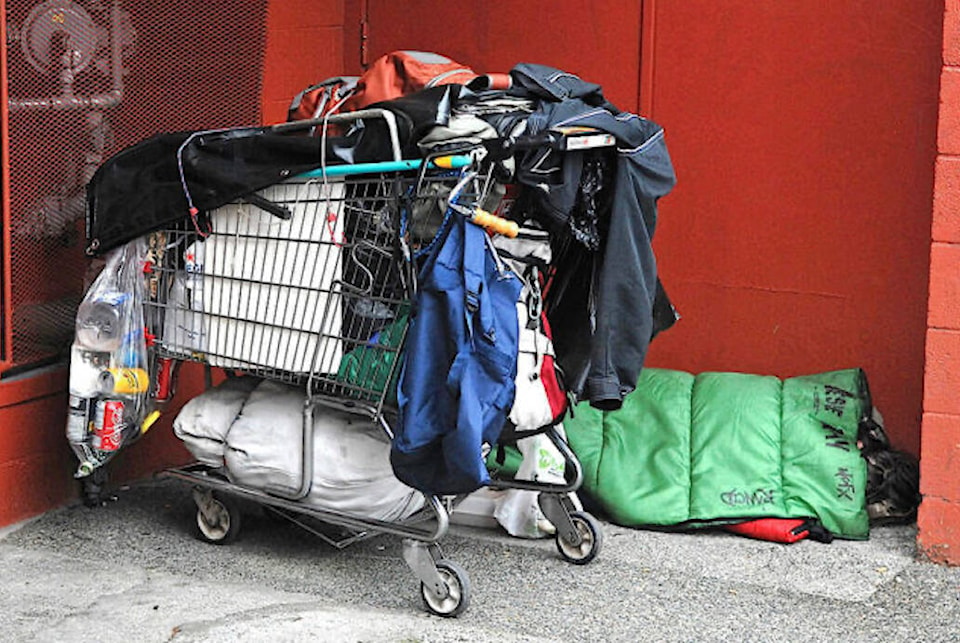City officials cannot yet say if the Safe Streets Bylaw, passed by a unanimous council vote in July with promises to curb scenes of public disorder, harassment and other anti-social activity in the downtown core, is working.
City spokesperson Tyler Clarke said there have not yet been any reports or updates made available as to the effectiveness of the bylaw since it was passed.
“It’s still in the very early stages, so it’s difficult to provide a baseline for comparisons.”
READ MORE: Terrace safe streets bylaw now official
Leading expert in municipal safe-streets-like bylaws Joseph Hermer, who is chair of the Department of Sociology at the University of Toronto Scarborough, said the “poorly drafted” Terrace bylaw will likely make things worse, and leaves the city open to a court challenge.
Speaking with The Terrace Standard from Prince George, where a similar bylaw exists, Hermer said such bylaws “almost never” solve the issues they’re supposed to, adding that Terrace wasted money by even considering it.
“It goes back to the resource and accountability issue. I’m very surprised the city spent any time on this at all.”
The unintended effect of the bylaw could be similar to what happened in Prince George where the homeless population has a legally-protected area in which to live that’s known as “moccasin flats”.
“It’s very clear that the presence on the Safe Streets Bylaw in Prince George, and the fact that it was used in such a punitive way, contributed to the ongoing presence of the encampments,” Hermer said.
“Because people use the encampments for safe spaces away from bylaw enforcement.”
Terrace recently also dropped plans to designate an overnight shelter space for homeless people over the summer, inviting another parallel to Prince George.
READ MORE: City continues “status quo” approach to homelessness
Hermer said a centralized approach to homelessness could be beneficial if done properly by harm reduction and peer support workers. But he said a “confused” City of Prince George also failed to find a central place for homeless residents, resulting in people deciding for themselves where to camp outdoors. Once an encampment has become settled in one location courts have mostly ruled against municipalities seeking to dismantle them.
The Terrace bylaw, Hermer said, leaves too much room for bylaw officers to interpret the rules as they see fit, with leeway to penalize anyone seen giving spare change to a person on the street, for example.
Hermer conducted an analysis, released in March, on the first 99 days of the enforcement of the Prince George bylaw, from Aug. 31 to Dec. 8, 2021, and believes the Terrace bylaw to also be discriminatory.
“We know that Indigenous people overall are over-policed and over-scrutinized in public space in harmful and discriminatory ways. These bylaws just add to that,” Hermer said.
“In terms of vulnerable Indigenous people who are unsheltered — who may have mental or physical health issues in the context of inter-generational trauma — these are very harmful things to enforce.”
Speaking on the report, Prince George resident and B.C. Assembly of First Nations (BCAFN) Regional Chief Terry Teegee slammed the city for its “counterproductive, cruel, and inherently racist” bylaw.
“Settler governments continue to dismiss the ways inter-generational trauma impacts our communities and plays a role in homelessness, the illicit drug poisoning crisis, and other issues unfolding on the streets,” Teegee said.
“Punitive, short-sighted policies like the Safe Streets Bylaw simply exacerbate the situation and prolong the crises.”
Hermer said any claims that the Terrace bylaw has nothing to do with homeless people should be taken as both “dubious and ignorant.”
“I see a mixture of what I usually see with these laws, which essentially operate like old, archaic vagrancy laws under a new guise.
“Taken together they make it illegal for particularly unsheltered people to be in public spaces at all. It very clearly is targeted towards the survival activities of unsheltered people.”
READ MORE: ‘Street dad’ mourned by Terrace homeless community
Do you have a comment about this story? email:
michael.willcock@terracestandard.com
